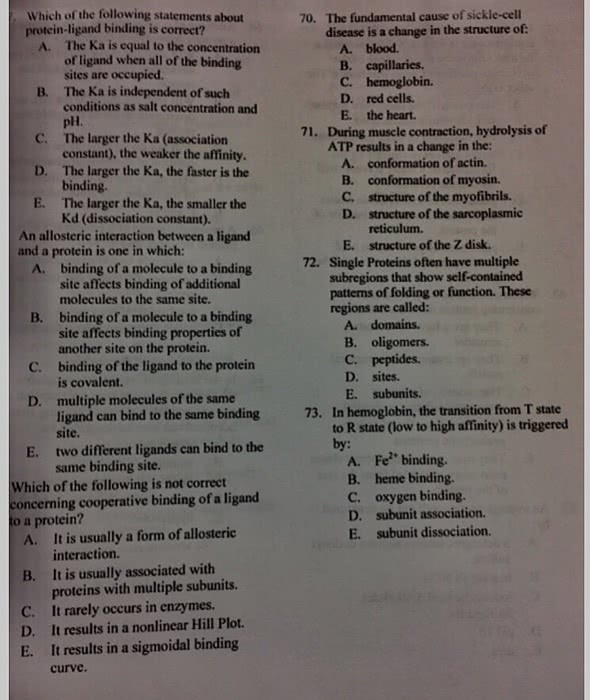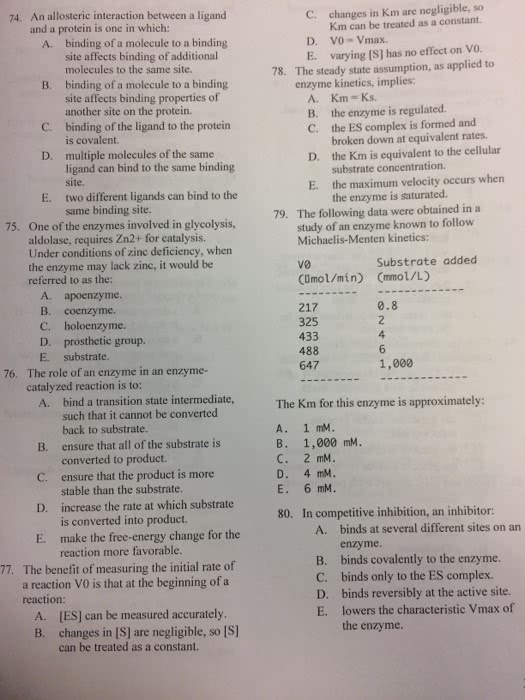BCH 3125 Lecture Notes - Lecture 7: Protein Structure, Filter Paper, Equilibrium Constant
Document Summary
Function of proteins: thermodynamics of binding: binding: thermodynamics of ligand binding. Ligand: a(cid:374)(cid:455) (cid:373)ole(cid:272)ule that (cid:271)i(cid:374)ds to a(cid:374)othe(cid:396) (cid:373)ole(cid:272)ule. I(cid:374) (cid:271)io(cid:272)he(cid:373)ist(cid:396)(cid:455), (cid:862)liga(cid:374)d(cid:863) usuall(cid:455) (cid:396)efe(cid:396) to a small molecule such which binds to a macro molecule. The macromolecule is often referred to as the receptor for the ligand. In protein-protein interactions, proteins themselves can be thought of as ligands. Ligands and their receptors bind in various manners, but the most common one is that they created something called a non-covalent complex. This means that the molecular components are held together by non-covalent interactions (such as ionic interactions, hydrogen bonds, van der waals, etc. ) So far, we talked about the equilibrium/thermodynamic view of binding. We can also think of binding from a kinetic perspective. Where there is an association energy barrier to the formation of our complex, and when the complex is bound there is the reverse reaction where it comes apparent.



